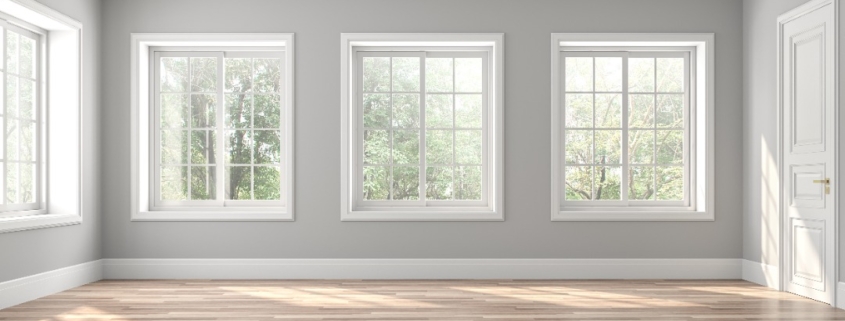Standard Window Sizes
If you plan to replace your home’s windows, then it’s important to understand standard replacement window sizes. By knowing these sizes, you can make more informed decisions about the type of windows you want and ensure that the installation process runs smoothly. This article will cover everything you need about standard replacement window sizes, measuring for replacement windows, and custom windows.
Understanding Standard Window Sizes
You’re not alone if you’re wondering what standard window sizes are. Standard sizes refer to windows that are ready-made and available in various sizes from manufacturers. Standard options significantly reduce the time and expense of ordering and making custom windows.
However, it’s essential to note that standard window sizes may not always be the best fit for your home. If your home has unique dimensions, you may need custom windows to ensure a proper fit.
Importance of Accurate Measurements
Before purchasing standard replacement windows, taking precise measurements of your current windows is crucial. By doing so, you can avoid costly mistakes during the installation process. Inaccurate measurements will also make it difficult to order replacement windows if you need custom sizes.
When measuring your windows, you must measure both the height and width. Measuring in multiple places is best to ensure accuracy, as windows can warp over time.
Common Standard Window Sizes
The most common standard window sizes can vary slightly depending on the manufacturer. However, you’ll likely find standard window sizes ranging from 24 by 36 inches to 48 by 72 inches for double-hung windows. Standard-size slider windows may range from 36 by 24 inches to 84 by 60 inches.
It’s essential to note that standard window sizes may not always fit your home’s specific needs. For example, if you live in an area with extreme weather conditions, you may want to consider windows with thicker glass or additional insulation.
Additionally, if you want to increase natural light in your home, you may want to consider larger or additional windows to your home’s design.
Choosing standard or custom windows will ultimately depend on your home’s needs and budget. It’s always best to consult a professional to ensure you’re making the best decision for your home.
Types of Replacement Windows
Now that you understand standard window sizes, let’s look at the different types of replacement windows you can choose from. Choosing the right replacement windows can make a big difference in your home’s look and feel and energy bills.
Single-Hung Windows
Single-hung windows are probably the most commonly installed windows in homes. They are made of two panels that slide up and down, but only the bottom panel moves. Single-hung windows are widely used because they’re affordable and easy to install. They are a great option for those who want a classic look on a budget.
However, it’s important to note that single-hung windows may not be the most energy-efficient option. Because only the bottom panel moves, air can easily escape through the top of the window. If you’re looking for a more energy-efficient option, you may want to consider double-hung or casement windows.
Double-Hung Windows
Double-hung windows look very similar to single-hung windows, but both the top and the bottom panels are movable. This feature makes them popular for those who want better ventilation and cleaning flexibility. Double-hung windows are also a great option for those who want a classic look with added functionality.
One thing to remember with double-hung windows is that they may be more expensive than single-hung windows. However, the added benefits may be worth the extra cost.
Casement Windows
Casement windows are hinged at the side, allowing them to open outward like a door. They come in various sizes and can be customized to fit unique window openings. Casement windows are a great option for maximum ventilation and energy efficiency.
One thing to remember with casement windows is that they may not be the best option for those with small children or pets. Because they open outward, they can be a safety hazard if not properly secured.
Sliding Windows
Sliding windows can be a great choice for anyone who wants a low-profile window that can slide horizontally. They don’t stick out when opened, making them great in tight spaces. Sliding windows are also a great option for those who want a modern look.
One downside to sliding windows is that they may not be as energy-efficient as other options. Because they slide horizontally, air can easily escape through the sides of the window. However, with proper installation and weatherstripping, this can be minimized.
Bay and Bow Windows
Bay and bow windows can provide an extra bit of flair to a home’s appearance. They protrude from the exterior wall, adding extra floor space and a beautiful view. These windows can be customized to suit your needs, whether you want a cozy reading nook or a stunning view of the outdoors.
One thing to remember with bay and bow windows is that they may be more expensive. However, the added benefits may be worth the extra cost.
When choosing replacement windows, it’s important to consider your budget, style preferences, and energy efficiency needs. With so many options, you will surely find the perfect windows for your home.
Measuring for Replacement Windows
Now that you’re familiar with the basic types of windows, let’s look at the process of measuring replacement windows.
Tools and Materials Needed
Before measuring your new windows, ensure you have the necessary tools and materials. You’ll need a tape measure, pen, paper, calculator, and a level.
Step-by-Step Measuring Guide
1. Start by measuring the width of the window frame from the inside.
2. Next, measure the height of the window frame from the inside.
3. Once you have both measurements, record them and repeat the process for your remaining windows.
4. If you’re replacing a window with a different type, such as replacing a single-hung window with a casement window, you’ll need to take additional measurements. This includes the depth of the window frame and the distance between the frame and your interior wall.
Custom Replacement Window Sizes
Although standard replacement windows are useful, sometimes they just don’t fit. In these cases, custom-made windows are an excellent solution. Custom windows are designed to fit your unique needs, whether you have an unusual size or odd-shaped window or an old home with non-standard window sizes that may require a custom fit.
When considering custom windows, it’s important to understand the pros and cons. Custom windows can be more expensive than standard windows, but they often offer better energy efficiency and durability. They also provide a more personalized fit for unique homes, ensuring your windows look and perform exactly as you want.
In closing
When replacing your windows, understanding standard sizes and types of windows is crucial. Measuring your new windows and considering whether custom windows are necessary can make the process of purchasing windows a breeze. With the information in this article, you’re better equipped to make the decisions that will best fit your home’s specific needs.
Our service area includes the following towns: Tyler, Whitehouse, Bullard, Lindale, Chandler, Canton, Mineola, Longview, Kilgore, Henderson, Gilmer, Gladewater, Marshall, Hallsville, and Palestine.









